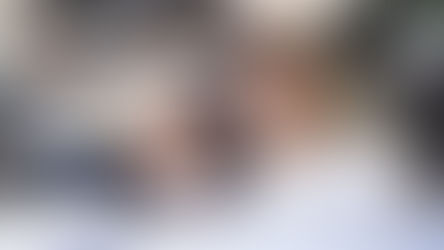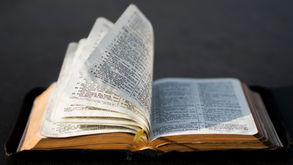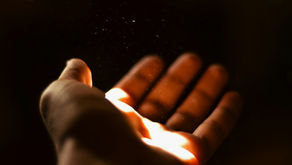The Mansion of Bahjí
- Uplifting Words

- Jan 7, 2019
- 7 min read
Updated: May 25, 2020

In the summer of 1879, there occurred one of those natural disasters for which Akka was the frequent host, an epidemic of plague erupted. As was their wont, those who could do so wisely fled from the centre of the epidemic, included among those who abandoned the city and its environs were Udi Khammar and his family. `Abdu’l-Bahá relates its consequences for Baha’u’llah:
It so happened that an epidemic disease had broken out at Bahjí, and the proprietor of the house fled away in distress, with all his family, ready to offer the house free of charge to any applicant. We took the house at a very low rent, and there the doors of majesty and true sovereignty were flung wide open. Named Bahjí (Delight), it was to be the home of Bahá’u’lláh for the remaining twelve and a half years of His life.
This large and imposing building, which covers an area of over 740 square metres, was built about 1870 (over an old one-story structure built many years previously) as a summer palace for `Udi Khammar, a prosperous merchant of `Akka and the original owner of the eastern half of what is now known as the House of `Abbud.
It was situated on a piece of elevated land crossed by the aqueduct which brought water from the springs at Kabri to `Akka. `Abdu'llah Pasha, the governor of `Akka, had a mansion immediately to the south, now know as the Baydun Mansion. The whole area was known as "Al-Bahja" or "Place of Delight".
The mansion provided the space required by Bahá’u’lláh and His family to meet visitors and friends that came to see Him as His religion continued to grow beyond Iran and the Ottoman Empire.
Bahá’u’lláh characterized the Mansion of Bahjí as the "lofty mansion,"the spot which "God hath ordained as the most sublime vision of mankind."
While living there, Bahá’u’lláh wrote the last great work of his Ministry, the Epistle to the Son of the Wolf.
“In the name of God, the One, the Incomparable, the All-Powerful, the All-Knowing, the All-Wise.
Praise be to God, the Eternal that perisheth not, the Everlasting that declineth not, the Self-Subsisting that altereth not. He it is Who is transcendent in His sovereignty, Who is manifest through His signs, and is hidden through His mysteries. He it is at Whose bidding the standard of the Most Exalted Word hath been lifted up in the world of creation, and the banner of "He doeth whatsoever He willeth" raised amidst all peoples.”

Prophetic Inscription
An Arabic inscription placed over the door by the original builder in 1870 reads:
"Greetings and salutation rest upon this Mansion which increaseth in splendour through the passage of time. Manifold wonders and marvels are found therein, and pens are baffled in attempting to describe them."
The order of His imprisonment at ‘Akká having never been rescinded, Bahá’u’lláh stated concerning His days at Bahjí:
"Verily, verily, the most wretched prison has been converted into a Paradise of Eden."
While at Bahjí, Bahá’u’lláh elucidated His teachings and sent tablets to various parts of the world. They included references to His most pivotal social teaching — the oneness of humankind. All His other social teachings are means of achieving and sustaining the practical unity of humanity so that people may fulfill the purpose of their creation, to peacefully carry forward an ever-advancing civilization.
Bahá’u’lláh renewed the great spiritual teachings found in earlier religions, foremost among which is the need to recognize the Messenger of God in the era in which He appears, and follow His teachings.
In one of His best-known tablets from this period, Bahá’u’lláh counsels:
"Be generous in prosperity, and thankful in adversity. Be worthy of the trust of thy neighbor, and look upon him with a bright and friendly face. Be a treasure to the poor, an admonisher to the rich, an answerer to the cry of the needy, a preserver of the sanctity of thy pledge. Be fair in thy judgment, and guarded in thy speech. Be unjust to no man, and show all meekness to all men. Be as a lamp unto them that walk in darkness, a joy to the sorrowful, a sea for the thirsty, a haven for the distressed, an upholder and defender of the victim of oppression. Let integrity and uprightness distinguish all thine acts. Be a home for the stranger, a balm to the suffering, a tower of strength for the fugitive. Be eyes to the blind, and a guiding light unto the feet of the erring. Be an ornament to the countenance of truth, a crown to the brow of fidelity, a pillar of the temple of righteousness, a breath of life to the body of mankind, an ensign of the hosts of justice, a luminary above the horizon of virtue, a dew to the soil of the human heart, an ark on the ocean of knowledge, a sun in the heaven of bounty, a gem on the diadem of wisdom, a shining light in the firmament of thy generation, a fruit upon the tree of humility. We pray God to protect thee from the heat of jealousy and the cold of hatred."
Bahá’u’lláh would watch from the balcony of the mansion to see His dearly loved son, ‘Abdu’l-Bahá, arriving from ‘Akká. Referring to ‘Abdu’l-Bahá as "the Master" and "the Most Great Branch," Bahá’u’lláh appointed him to be the Center of His Covenant and His successor as head of the Bahá'í Faith.
It was in that same mansion that the distinguished Orientalist, Prof. E. G. Browne of Cambridge, was granted his four successive interviews with Bahá'u'lláh, during the five days he was His guest at Bahjí (April 15-20, 1890), interviews immortalized by the Exile's historic declaration that "these fruitless strifes, these ruinous wars shall pass away and the `Most Great Peace' shall come." "The face of Him on Whom I gazed," is the interviewer's memorable testimony for posterity, "I can never forget, though I cannot describe it. Those piercing eyes seemed to read one's very soul; power and authority sat on that ample brow.... No need to ask in whose presence I stood, as I bowed myself before one who is the object of a devotion and love which kings might envy and emperors sigh for in vain." "Here," the visitor himself has testified, "did I spend five most memorable days, during which I enjoyed unparalleled and unhoped-for opportunities of holding intercourse with those who are the fountain-heads of that mighty and wondrous spirit, which works with invisible but ever-increasing force for the transformation and quickening of a people who slumber in a sleep like unto death. - Shoghi Effendi, God Passes By p. 194
Bahá’u’lláh lived here in the utmost simplicity, surrounded by family, disciples, and pilgrims.
Six days before He passed away He summoned to His presence, as He lay in bed leaning against one of His sons, the entire company of believers, including several pilgrims, who had assembled in the Mansion, for what proved to be their last audience with Him. "I am well pleased with you all," He gently and affectionately addressed the weeping crowd that gathered about Him. "Ye have rendered many services, and been very assiduous in your labors. Ye have come here every morning and every evening. May God assist you to remain united. May He aid you to exalt the Cause of the Lord of being." - Shoghi Effendi, God Passes By p. 222
In the early hours of 29 May 1892, Bahá’u’lláh passed away at the Mansion of Bahjí. Nine days later His will was unsealed. It designated ‘Abdu’l-Bahá as His successor and head of the Bahá'í Faith — the first time in history that the founder of a world religion had made explicitly clear whom people should follow after His death. This declaration of a successor is the pivotal provision of what is known to Bahá'ís as the "Covenant of Bahá’u’lláh." It has enabled the Bahá'í Faith to remain united around one central authority for over a century.
Shortly after the passing of Bahá’u’lláh, ‘Abdu’l-Bahá sent this message:
"The Sun of Truth, that Most Great Light, hath set upon the horizon of the world to rise with deathless splendour over the Realm of the Limitless. In His Most Holy Book He calleth the firm and steadfast of His friends: 'Be not dismayed, O peoples of the world, when the day-star of My beauty is set, and the heaven of My tabernacle is concealed from your eyes. Arise to further My Cause, and to exalt My Word amongst men.'"
As a pilgrimage site for Baha'is, several rooms on the upper floor are of particular interest. The southeaster room was occupied by Bahá'u'lláh. In it, He received visitors, including the distinguished orientalist Professor Edward G. Browne, whose account of the meeting is familiar to many Baha'is and one of the few westerners to meet Bahá’u’lláh. The south-western room was used by Shoghi Effendi during the times he stayed and worked at Bahjí. The two small rooms at the centre of the north end of the Mansion are interesting. The one on the left contained for many years the library of the noted Baha'i school, Mirza Abu'l-Fadl, until it was transferred to the International Baha'i Library for preservation under more favourable conditions. The one on the right contains the original gravestone of the Purest Branch and of the Mother of `Abdu'l-Baha, as well as her original coffin, placed there by the Guardian when he transferred their remains from `Akka to new graves at the base of the Arc on Mount Carmel in Haifa.
Decorating the interior of the Mansion are numerous photographs, paintings, newspaper clippings, and other materials placed there by the Guardian.
The Turkish primitive paintings above the windows on the outside of the building are of no particular significance, but are considered to be fine examples of such work of the period.
Of the wall surrounding the Mansion, the one to the south is completely original and includes, at its eastern end, a small room which is the tomb of `Udi Khammar and the step which Baha'u'llah used to mount His steed. The western wall is original as far as the gate.
In common with many large country houses of the time, Bahjí was equipped with a large number of outbuildings, with a number of purposes. By the time that Shoghi Effendi gained control of the property, many of these were in a state of disrepair, and were pulled down. The visitor to the Mansion today does not realise that on at least two sides, the view from the house would have been of these buildings. Over the years the Mansion has been restored to its original condition and the site has been surrounded with gardens stretching in all directions. A beautiful reception centre is now the starting point of visits to Bahá’u’lláh’s shrine.
Directions to Bahji
The entrance to the Bahá’í Gardens in ‘Akko is located at the end of the old access road to Kibbutz Shomrat. Visitors arriving by private automobile may take National Road 4 to the North ‘Akko junction. Heading south toward the center of ‘Akko, take the first left turn after 400 meters and follow the road to the end. Free parking is available near the entrance.
The garden entrance is a short walk from the Bustan HaGalil bus stops served by bus 271, which connects Haifa, ‘Akko and Nahariya.























